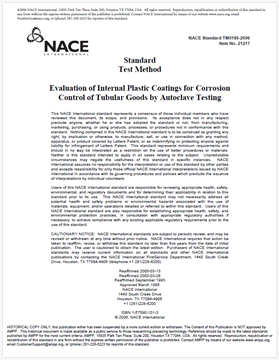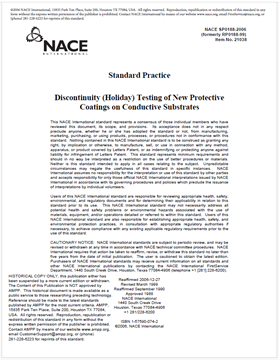Search
02385 ALLOY AND COATINGS PARAMETERS THAT MAY CONTRIBUTE TO THE PERFORMANCE BEHAVIOR OF HIGH TEMPERATURE MATERIALS
Also Purchased
00009 REPORT OF A COATING FAILURE ON A 16-INCH OIL PIPELINE UNDER WET CO2 SERVICE
Product Number:
51300-00009-SG
ISBN:
00009 2000 CP
$20.00
NACE TM0185-2006, Evaluation of Internal Plastic Coatings for Corrosion Control of Tubular Goods by Autoclave Testing
Product Number:
21217-SG
$179.00
NACE SP0188-2006 (formerly RP0188), Discontinuity (Holiday) Testing of New Protective Coatings on Conductive Substrates
Product Number:
21038-SG
Publication Date:
2006
$179.00




